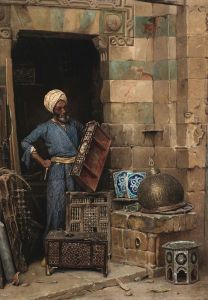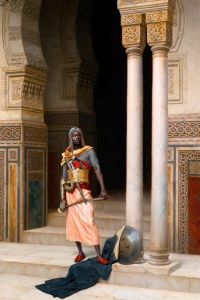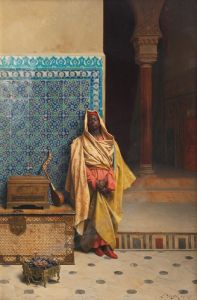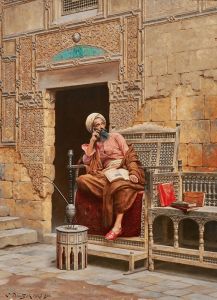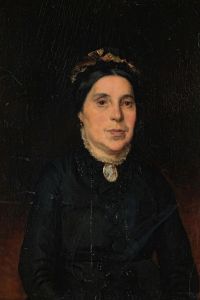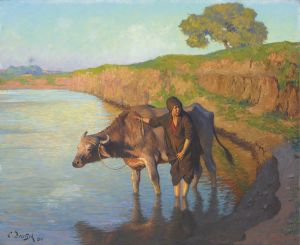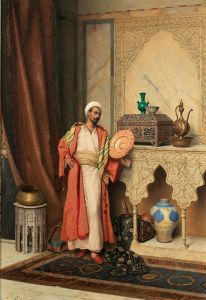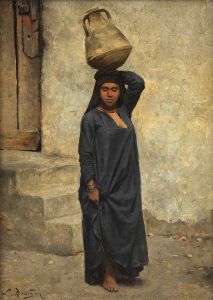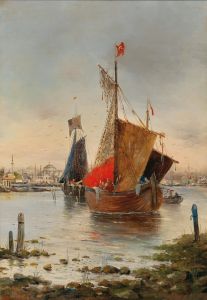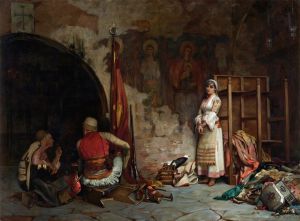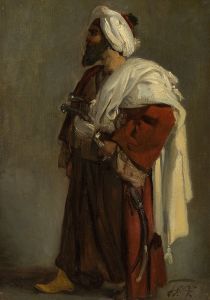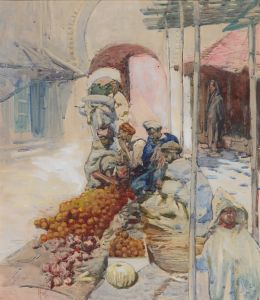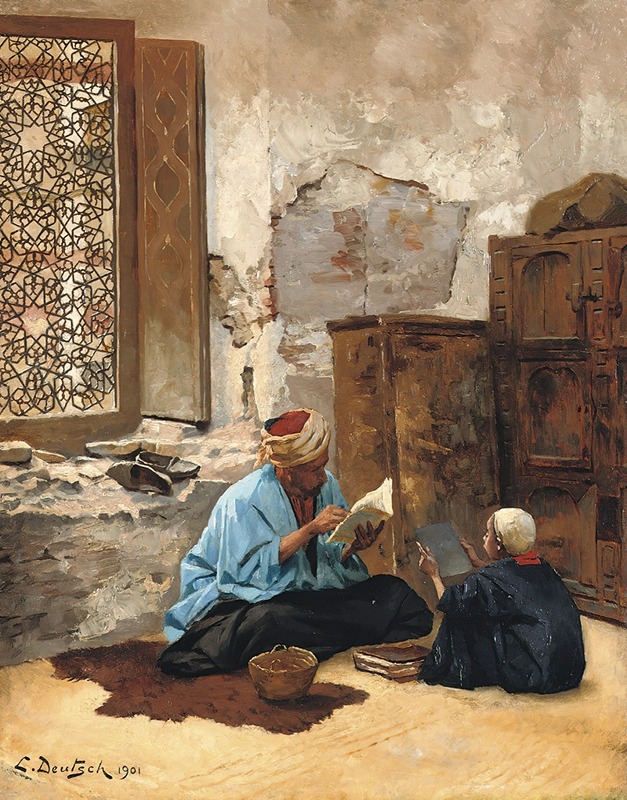
The Lesson
A hand-painted replica of Ludwig Deutsch’s masterpiece The Lesson, meticulously crafted by professional artists to capture the true essence of the original. Each piece is created with museum-quality canvas and rare mineral pigments, carefully painted by experienced artists with delicate brushstrokes and rich, layered colors to perfectly recreate the texture of the original artwork. Unlike machine-printed reproductions, this hand-painted version brings the painting to life, infused with the artist’s emotions and skill in every stroke. Whether for personal collection or home decoration, it instantly elevates the artistic atmosphere of any space.
Ludwig Deutsch was an Austrian painter born in 1855, renowned for his Orientalist works. He was part of a movement of European artists in the 19th century who were fascinated by the cultures and aesthetics of the Middle East and North Africa. Deutsch's works are celebrated for their meticulous attention to detail and vibrant depiction of scenes from the regions he studied.
One of Deutsch's notable paintings is "The Lesson," which exemplifies his skill in capturing the essence of Orientalist themes. This painting, like many of his others, reflects his deep interest in the daily life and customs of the people in the Middle East. Deutsch's works often depict scenes of scholarly or religious significance, and "The Lesson" is no exception.
"The Lesson" portrays a scene of education, a common theme in Orientalist art, which often romanticized the intellectual and cultural life of the East. In this painting, Deutsch likely presents a teacher and his students engaged in a moment of learning. The setting is typically rich in detail, showcasing the architectural and decorative elements characteristic of the region. The use of light and shadow in the painting highlights the intricate patterns and textures of the clothing and surroundings, a testament to Deutsch's dedication to realism and his ability to bring his subjects to life.
Deutsch's paintings are known for their photographic precision, a result of his extensive studies and travels. Although there is limited information on whether Deutsch traveled extensively to the Middle East himself, he was known to have collected photographs and artifacts from the region, which he used as references for his work. This practice was common among Orientalist painters, who sought to create authentic representations of the cultures they depicted.
"The Lesson" is a reflection of the 19th-century European fascination with the Orient, a term used to describe the Middle East and North Africa. Orientalism, as a genre, has been critiqued for its often romanticized and sometimes stereotypical portrayals of Eastern cultures. However, artists like Deutsch are also appreciated for their technical skill and the beauty of their compositions.
Ludwig Deutsch's work, including "The Lesson," remains significant in the study of Orientalist art. His paintings are part of various collections and continue to be exhibited in museums and galleries around the world. They offer a glimpse into the 19th-century European perspective on the East and contribute to the broader understanding of cultural exchange and artistic inspiration during that period.
In summary, "The Lesson" by Ludwig Deutsch is a quintessential example of Orientalist art, showcasing the artist's attention to detail and his fascination with Eastern culture. While it reflects the artistic trends and cultural attitudes of its time, it also stands as a testament to Deutsch's skill and his contribution to the genre.





